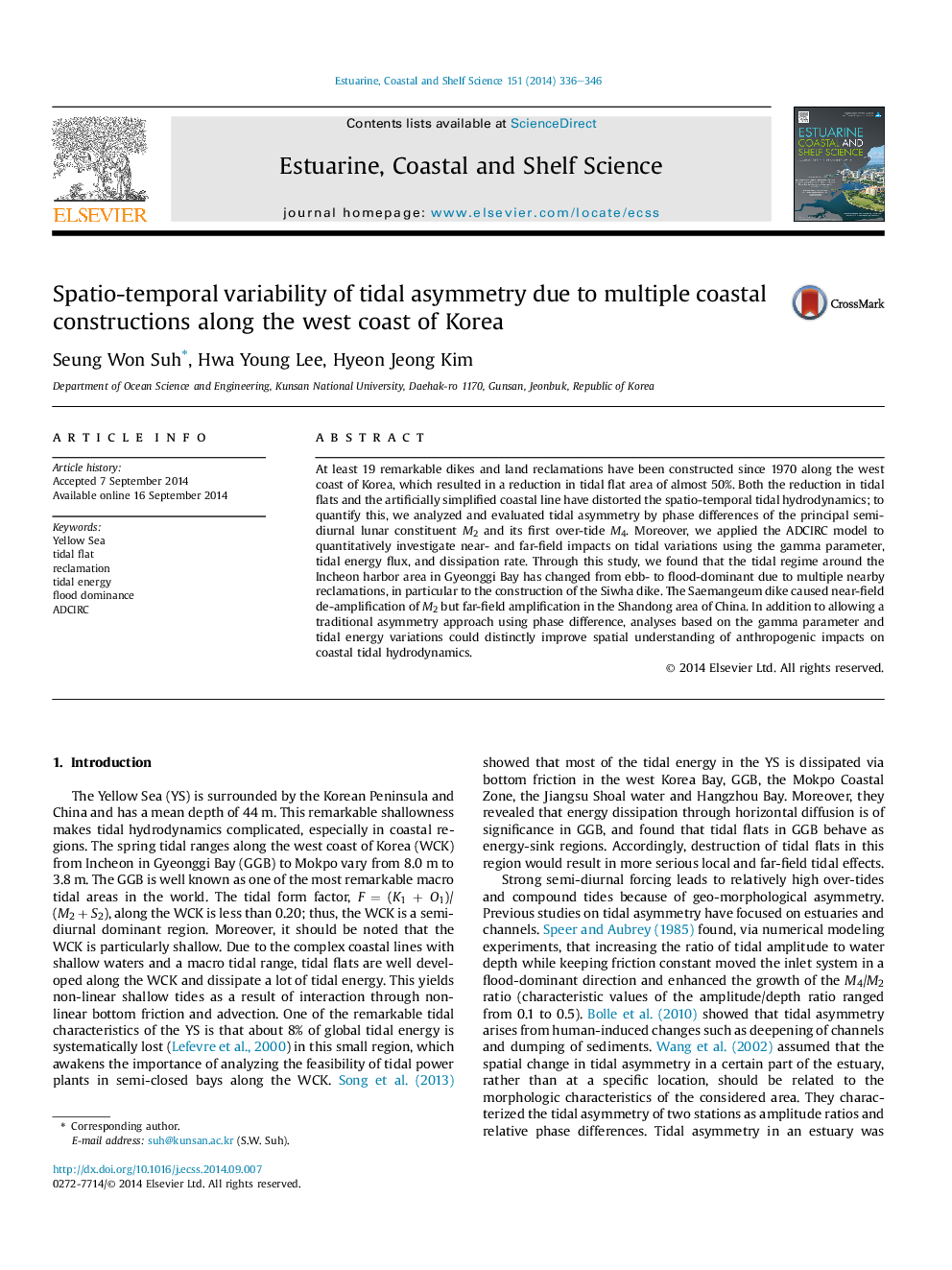| Article ID | Journal | Published Year | Pages | File Type |
|---|---|---|---|---|
| 6384836 | Estuarine, Coastal and Shelf Science | 2014 | 11 Pages |
Abstract
At least 19 remarkable dikes and land reclamations have been constructed since 1970 along the west coast of Korea, which resulted in a reduction in tidal flat area of almost 50%. Both the reduction in tidal flats and the artificially simplified coastal line have distorted the spatio-temporal tidal hydrodynamics; to quantify this, we analyzed and evaluated tidal asymmetry by phase differences of the principal semi-diurnal lunar constituent M2 and its first over-tide M4. Moreover, we applied the ADCIRC model to quantitatively investigate near- and far-field impacts on tidal variations using the gamma parameter, tidal energy flux, and dissipation rate. Through this study, we found that the tidal regime around the Incheon harbor area in Gyeonggi Bay has changed from ebb- to flood-dominant due to multiple nearby reclamations, in particular to the construction of the Siwha dike. The Saemangeum dike caused near-field de-amplification of M2 but far-field amplification in the Shandong area of China. In addition to allowing a traditional asymmetry approach using phase difference, analyses based on the gamma parameter and tidal energy variations could distinctly improve spatial understanding of anthropogenic impacts on coastal tidal hydrodynamics.
Related Topics
Physical Sciences and Engineering
Earth and Planetary Sciences
Geology
Authors
Seung Won Suh, Hwa Young Lee, Hyeon Jeong Kim,
